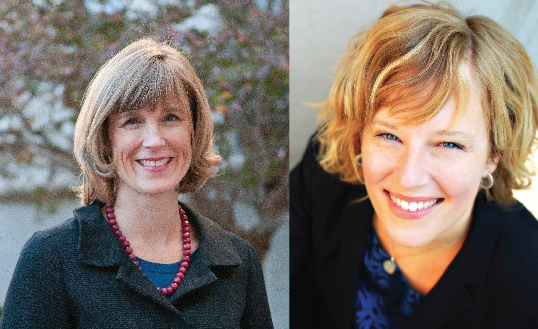 Texas Law faculty members Heather Way and Lucy Wood are writing a book that shows how the concepts in first-year Property courses work in practice. Real Property for the Real World: Building Skills Through Case Study, is forthcoming from West Publishing Company. Tanya Marsh at Wake Forest University is a co-author as well.
Texas Law faculty members Heather Way and Lucy Wood are writing a book that shows how the concepts in first-year Property courses work in practice. Real Property for the Real World: Building Skills Through Case Study, is forthcoming from West Publishing Company. Tanya Marsh at Wake Forest University is a co-author as well.
The book is the latest in a series of pioneering efforts in experiential education at Texas Law, which has one of the largest and most successful clinical programs in the country. A majority of Texas Law students participate in a clinic before graduating, and they routinely cite their time in the clinics as a highlight of their law-school experience.
Bringing a more experiential approach to the first-year curriculum is a newer idea. Property, long a mainstay in the first-year curriculum of American law schools, has traditionally been a course about theory. Students learn about adverse possession, the rule of capture, and the rule against perpetuities. Way and Wood envision it as a chance for something more: a course where students can learn how ideas like those work in practice.
“Our goal is to expose 1L students to more hands-on lawyering skills that also reinforce property law doctrine,” says Way. “We’ve created a series of case studies, based largely on real life cases, that provide students with the opportunity to participate in all sorts of fun hands-on skill-building exercises in class.”
The book has its genesis in the first-year course on Property Law at Texas Law. Professors Michael Sturley and Lynn Blais, who teach separate sections of the course, invited Way and Wood – both highly-regarded clinical faculty members – to guest-teach some of their classes.
The in-class exercises, in addition to their pedagogical value, are often entertaining. “One of them involves interviewing a guy who had been told by his homeowners’ association that he cannot keep chickens in his back yard,” says Wood. “Another involves searching through deed records to find out whom jazz musician Kurt Elling in Chicago bought his condo from — the Obamas.”
Of course, not every exercise is so light-hearted. Several case studies for the course come from the disaster recovery work that the William Wayne Justice Center and its fellows have spearheaded in the Gulf and in the Rio Grande Valley, allowing students to learn about property law while talking about the realities of poverty and inequity. Observes Wood: “Tough client problems and even tougher social problems draw students in, making them want to learn to lawyer.”
The classes are a hit. “We have found it to be an enriching experience to show the students how lawyers today use seemingly abstract doctrinal concepts, like adverse possession or real covenants, to work through client’s problems,” says Way.
The success of the classes has led Way and Wood to look for a way to spread the benefits of the approach more widely. “We were looking for opportunities to make these case studies available to other faculty and law students around the country. And then, with the direction from the ABA to incorporate more experiential opportunities in the law curriculum, the timing was perfect to turn the case studies into a book.”
The book is expected to be released this fall.
